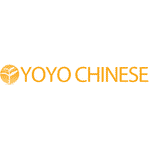
28 Best Online Chinese Courses in 2024
When you start learning Mandarin Chinese, you might feel as though you don’t have a clear language learning path.
Online Chinese courses can provide you with the direction and structure you need to take your skills to the next level.
But which of the many options available is the best online Chinese course for you?
Whether you’re a beginner or are ready to navigate challenging native material, we’ve curated a list of 28 online Chinese resources that can reliably guide you through your language learning journey.
Contents
- 1. Best for Exploring Chinese Culture: ChinesePod
- 2. Best for Immersing in Chinese Media: FluentU
- 3. Best for Conversational Chinese: ChineseClass101.com
- 4. Best for Intensive Studying: Mandarin Blueprint
- 5. Best for Grammar: ChineseFor.Us
- 6. Best for Balancing Formal and Informal Chinese: Yoyo Chinese
- 7. Best for Studying Chinese Up to HSK 9: Chinese Zero to Hero!
- 8. Best for Live Classes: Domino Chinese
- 9. Best for Casual Learning: Udemy
- 10. Best for Listening Comprehension: The Real Spoken Chinese Vault
- 11. Best for Auditory Learners: Pimsleur
- 12. Best for Casual Chinese: ChineseTrack
- 13. Most Fun All-around Course: HelloChinese
- 14. Best for Beginners: Rosetta Stone
- 15. Best for Gamified Learning: Duolingo
- 16. Most Fun for Learning Grammar: LingoDeer
- 17. Most Fun for HSK Test Preparation: Ninchanese
- 18. Best for Self-paced Learning: edX
- 19. Best for Unlimited Courses: Coursera
- 20. Best for Niche Topics: eChineseLearning
- 21. Best for Group Classes: That’s Mandarin
- 22. Best for Self-learning: GoEast Mandarin
- 23. Best for Interactive Audio Lessons: Rocket Chinese
- 24. Best for Story Lovers: Chinese Uncovered
- 25. Best for Practicing Sentences: Glossika
- 26. Best for Learning Vocabulary: Mondly
- 27. Most Laidback Course: Coffee Break Chinese
- 28. Best for Community-based Learning: Busuu
Download: This blog post is available as a convenient and portable PDF that you can take anywhere. Click here to get a copy. (Download)
1. Best for Exploring Chinese Culture: ChinesePod
Price: $29.99 per month | $78.99 per quarter | $249.99 per year (price may vary depending on territory)
Summary: ChinesePod has a massive library of over 4,000 video and audio lessons about the Chinese language and culture.
The lessons on ChinesePod are categorized into five levels: Newbie, Elementary, Intermediate, Upper Intermediate and Advanced. Each level has a set of recommended lessons, but you don’t have to follow a specific order when studying them.
The ChinesePod clips cover practically any topic, from advanced chengyu stories and the Chinese interpretation of love to standard greetings and pinyin explanations.
Pros:
- Massive library of 4,000+ audio and video lessons
- Covers a wide range of topics
- Teaches authentic expressions and cultural tidbits
Cons:
- No specific order for going through the videos
- Heavily focused on listening at the expense of other skills
- Too much explaining in English with beginner videos
Read our honest ChinesePod review here.
2. Best for Immersing in Chinese Media: FluentU
Price: Free trial available; $29.99 per month
Summary: FluentU teaches you Chinese through native media like vlogs, movie clips and news reports.
FluentU takes clips from authentic Chinese media and turns them into personalized language lessons. That means you can watch scenes from your favorite Chinese shows, music videos and more while building your vocabulary and understanding of the language.
Each video comes with interactive subtitles available in Chinese, pinyin and English. By hovering over or clicking on a word or phrase in the subtitles, you’ll get the translation, part of speech, an accompanying image and more.

The flashcard feature and personalized quizzes after each video mean you can easily review new words and test your knowledge as you progress through the expansive video library.
Pros:
- Allows you to learn through real-world media
- Video clips equipped with interactive learner tools
- Suitable for auditory and visual learners
Cons:
- No feedback from native speakers
- Minimal grammar instruction
- Needs to be paired with additional learning materials
3. Best for Conversational Chinese: ChineseClass101.com
Price: Free trial available; starts at $7.99 per month
Summary: ChineseClass101 features short videos and podcasts on Mandarin Chinese, which are regularly updated every week.
ChineseClass101.com is an Innovative Language course that aims to provide fun, culturally relevant instruction to help you enjoy learning Chinese.
Aside from its thousands of audio and video lessons, it releases free Chinese lessons each week. ChineseClass101.com also features flashcards and printable PDF lesson notes to supplement your studies and enhance your recall.
Mostly focused on beginner Chinese students, ChineseClass101.com also provides some intermediate and advanced material. If you’d like a free glimpse of what the site has to offer, check out its YouTube channel.
Pros:
- Flexible course structure
- Offline and downloadable resources available for free users
- Plenty of features for vocabulary practice
Cons:
- Marketing emails masked as “email lessons”
- The web program and mobile app offer very different learning experiences
- Limited native speaker feedback
Is it worth upgrading to a paid version of ChineseClass101? Find out in this review.
4. Best for Intensive Studying: Mandarin Blueprint
Price: Depends on which part of the course you purchase; starts at $300 for free lifetime access to Traverse Flashcards
Summary: Based on the founders’ experience of becoming fluent in Chinese as non-natives, Mandarin Blueprint uses unique teaching methods to take you from beginner to proficient.
Mandarin Blueprint is a video-based course led by two fluent Chinese speakers that have invented their own system to help English speakers learn and retain Mandarin. Instead of the typical beginner, intermediate and advanced lessons, Mandarin Blueprint is divided into three courses.
These courses focus on vital skills such as pronunciation, recognizing characters, building vocabulary and constructing sentences and paragraphs in Mandarin.
Pros:
- A unique and intuitive take on Mandarin progression
- Their weekly podcast addresses questions and concerns from learner emails
- Offers realistic long-term learning outcomes
Cons:
- Doesn’t offer an app option
- Bonus features like coaching, podcasts and community forum are very pricey
5. Best for Grammar: ChineseFor.Us
Price: Free trial lessons available here; starts at $39.99 (monthly rates go down if you have a biannual/annual subscription)
Summary: ChineseFor.Us offers in-depth courses that teach you about the fundamentals of Chinese up to HSK 3.
Designed and run by an experienced Chinese teacher, ChineseFor.Us aims to help learners develop comprehensive reading, writing, speaking and listening skills.
Along the way, learners study grammar, learn vocabulary through audio and test their learning with multimedia quizzes.
As an added bonus, ChineseFor.Us incorporates HSK levels, so if you plan to take the test, the course can give you a clear direction on what to study and is appropriate for complete beginners through upper beginners.
If you enjoy diving deep into the logic of language systems, this could be for you. If you have no interest in grammar, you might want to choose another course.
Pros:
- The lead instructor has experience teaching various age groups from 100+ countries
- Courses based on studying and teaching university-level Chinese
- Emphasis on both typing and handwriting
Cons:
- The most advanced HSK course is HSK 3
- Best for academic learners—may be too overwhelming for casual learners
- Foundational courses for beginners only
6. Best for Balancing Formal and Informal Chinese: Yoyo Chinese
Price: Free trial available; monthly subscriptions start at $14.99
Summary: Yoyo Chinese specializes in beginner and intermediate video lessons less than five minutes long.
Yoyo Chinese aims to provide students with a one-stop study solution. The course helps you learn, practice, test and review without ever leaving the site.
Yoyo Chinese offers over 1,000 video lessons, along with flashcards and quizzes. Video lessons are brief, so you can easily set aside five minutes a day to learn Chinese.
What I appreciate about the content itself is the mix of proper Chinese and Chinese spoken in real life. It’s important to learn the correct structures before going off and shortening sentences so you can understand Mandarin in both formal and informal settings.
Courses are available for complete beginners through upper intermediate students.
Pros:
- Good balance between spoken and “correct” Chinese
- Comprehensive courses with clear explanations
- Motivational and positive instruction
Cons:
- No mobile app
- Too much English instruction for intermediate and advanced students
- Chinese character courses only focus on simplified Chinese
7. Best for Studying Chinese Up to HSK 9: Chinese Zero to Hero!
Price: Free courses available; paid courses start at $9
Summary: Chinese Zero to Hero! features video courses that span HSK 1 to HSK 9, with emphasis on sentence structures and grammar.
Chinese Zero to Hero! offers several different courses and course packages for all levels of Chinese students.
Courses are video-intensive and focus on grammar and sentence formation to give students the foundation they need to construct meaning on their own. The course provides plenty of examples to illustrate rules and make them easier to apply in real life.
Overall, I think that Chinese Zero to Hero! is accessible and fantastic for those who need extra help with grammar.
Pros:
- Caters to all proficiency levels and preps up to HSK 9
- Courses are affordable
- Less pinyin and English as you move up in difficulty level
Cons:
- More grammar-intensive
- Some courses require textbooks and workbooks
- No way to get feedback from instructors
8. Best for Live Classes: Domino Chinese
Available on: iOS
Price: Starts at $5 per month
Summary: Domino Chinese is all about video courses that include authentic dialogues in Chinese, with the option to take live classes, too.
Domino Chinese aims to help students learn the foundations of the language while seeing how they can apply it in the real world.
The Domino Chinese course offers thousands of fun and informative video lessons with accompanying text files. They also incorporate real-life interactions with native speakers to make the lessons more authentic.
Rather than learning through themed vocabulary lists, you learn how characters build on top of one another to form new but related meanings. I think that Domino Chinese does a fantastic job of explaining the logic of character structure and definitions.
With hundreds of hours of material, Domino Chinese is appropriate for beginning through advanced level learners.
Pros:
- Learning content based on building blocks instead of rote memorization
- The course structure helps students reach HSK 4 faster than traditional university courses
- Option to sign up for a personal teacher
Cons:
- Complete beginner to advanced fluency seems a bit of a stretch—testimonials indicate learners also had private tutors that live in China, or already have some exposure to Chinese
- Downloadable content only available via an app on a premium subscription
- Need to dedicate at least seven hours a week to coursework
9. Best for Casual Learning: Udemy
Price: Some courses can be audited for free; price varies depending on the course
Summary: Udemy has casual, video-based Chinese courses made by individuals instead of universities.
Unlike many MOOC platforms, Udemy features courses created by individual experts, rather than courses that are part of a formal university curriculum. Because of this, there are hundreds of courses with varying levels and learning techniques, so you’ll have plenty of options to choose from.
Beginners can take introductory courses like Complete Chinese Course: Learn Mandarin for Beginners. Afterward, you can take more specialized courses, such as Learn Chinese HSK 3 Intensive Reading Course H31001.
Some courses even offer new and innovative approaches to teaching Chinese, such as the use of engaging material when teaching grammar and vocabulary.
Pros:
- Huge database with a wide diversity in Chinese course offerings
- Guided learning but less rigid in structure compared to other MOOCs
- Great for casual learners
Cons:
- Udemy certificates not recognized by employers
- Not eligible for academic credit
- Courses are developed by individuals whose credentials can’t be verified
10. Best for Listening Comprehension: The Real Spoken Chinese Vault
Price: $87 for lifetime access
Summary: The Real Spoken Chinese Vault trains your listening comprehension through native speaker interviews with different accents.
The Real Spoken Chinese Vault course is made up of 150 video lessons based on quick interviews with native speakers. This helps you become more familiar with different accents—as well as pick up conversational grammar and vocabulary.
The videos focus on authentic conversations with the interviewees, which is a great way to prepare for face-to-face communication since they also involve body language and facial expressions.
Given all the content you have lifetime access to, this video course is a steal. It’s not as comprehensive as some other options on this list, but it’s definitely worth every dollar. Plus, you can always pair this with other resources if you need writing practice.
Pros:
- Interviews feature real Chinese speakers with different accents
- Gets you acquainted with natural speaking speed right away
- Content also includes conversation components like fillers, slang, incomplete sentences, etc.
Cons:
- Priority on conversational grammar—could have more info on “proper” grammar
- Mainly for upper beginners and intermediate learners
- Need to look elsewhere for writing practice
11. Best for Auditory Learners: Pimsleur
Price: $575 for the complete course; $150 for each of the five Mandarin levels
Summary: Pimsleur consists of 30-minute Chinese audio lessons that you’re supposed to watch one day at a time.
Pimsleur has been around since 1963—way before online courses were even a thing!
At its core, Pimsleur works like a series of audiotapes, with optional supplementary exercises after each lesson. A lesson usually starts with a dialogue in Chinese, after which it’s broken down word by word.
The entire concept of Pimsleur is based on spaced repetition—dedicating yourself to one 30-minute lesson each day, with the next lesson asking you to recall words from previous lessons.
Pimsleur consists almost completely of audio, so I’d recommend it for improving your Chinese listening and pronunciation (and if you’re an auditory learner).
Pros:
- Focuses on honing your listening and speaking skills
- Teaches you Chinese naturally, with minimal memorization
- Clear instructions for going through the course
Cons:
- No feedback on your speaking
- Needs to be followed at a fixed pace
- Doesn’t target your reading or writing skills
Find out more about Pimsleur’s pros and cons here.
12. Best for Casual Chinese: ChineseTrack
Price: $19.95 per month | $149.95 per year
Summary: Formerly Chinese Learn Online, ChineseTrack gets you comfortable with listening to Chinese through podcasts centered on dialogues.
This step-by-step course was created by native English speakers for native English speakers, taking learners on a journey from complete beginner to intermediate-level proficiency in Chinese.
ChineseTrack aims to give you the skills you need with just a few minutes of daily study. Each lesson features a listening activity, vocabulary list, notes and interactive activities such as flashcards, typing tests and sentence-building exercises.
Another huge benefit of ChineseTrack is that you can choose between modes, including English, pinyin, simplified Chinese and traditional Chinese, allowing you to select your learning preference or alternate between the options to get a broader perspective.
Pros:
- Courses are tailored to native English speakers
- No fixed schedule so you can study at your own pace
- No long vocab lists, making Chinese learning more approachable for complete newbies
Cons:
- Pinyin-only learning mode seems unnecessary—only focuses on pronunciation and doesn’t contribute to the overall understanding of the language
- Limited exposure to regional accents since featured native speakers are all Taiwanese
- Limited functionality on mobile apps
13. Most Fun All-around Course: HelloChinese
Price: Free; premium version starts at $11.99 per month
Summary: HelloChinese uses short, gamified lessons to help you practice your speaking, pronunciation and listening skills.
If you want a fun and interactive learning experience that only focuses on Mandarin, HelloChinese is the app for you.
Equipped with speech recognition and animated character writing practice, HelloChinese has bite-sized game-based lessons that target all skills—including vocabulary and grammar.
The HelloChinese lessons and exercises under the “Learn” section are completely free. The Premium+ plan lets you use “Train” and “Immerse,” which have interactive podcasts and videos to hone in on listening and speaking skills.
Pros:
- Free lessons and exercises available
- A lot of speaking practice in addition to the pronunciation course
- Non-native English speakers can change the instruction language
Cons:
- Only goes up to HSK 4
- Extra features and activities only accessible with the Premium+ plan
- Best for beginners, but also works as a refresher or extra practice for intermediates
To know more about the language skills you’ll develop with HelloChinese, read this review.
14. Best for Beginners: Rosetta Stone
Price: Free trial available; per-language prices start at $44.99
Summary: Rosetta Stone teaches beginner and intermediate Chinese through visuals, repetition and interactive exercises.
Rosetta Stone is one of the most well-known language education programs on the market and provides an immersive curriculum that stimulates your brain’s learning ability.
The course offers features like TruAccent speech recognition software, contextual lessons, interactive activities, downloadable Audio Companion lessons and more.
Plus, Rosetta Stone offers 10-minute lessons to make them easy to cram into even the busiest schedules.
Rosetta Stone’s main focus is giving beginning and intermediate Chinese students the foundation they need to develop strong skills down the road, so it might not be an ideal option for more advanced students.
Pros:
- Immersive learning experience
- Focus on conversational skills over grammar
- TruAccent speech engine for practicing native pronunciation
Cons:
- Only suited for beginners to intermediates
- Extended learning tools not available for Chinese learners
Check out this Rosetta Stone review to decide if the app is worth it.
15. Best for Gamified Learning: Duolingo
Price: Free trial available; Super Duolingo starts at $12.99
Summary: Duolingo motivates you to learn Chinese through games that are doable in five minutes.
Whether used online or via the app, Duolingo is a classic among language students, and for good reason: It offers a fun, gamified approach to studying Chinese.
Vocabulary is reinforced through a variety of activities that put your skills to the test. It’s self-paced and broken down into digestible chunks, allowing you to study Chinese on a busy schedule.
Duolingo works best for beginning Chinese students. Because Duolingo focuses largely on memorization, it’s good for learning vocabulary. For deeper grammar structures, you might want to pair it with another course.
While speaking practice is available on Duolingo, I think there are better alternatives for correct pinyin pronunciation and tones.
Pros:
- Engaging, game-like vocabulary practice
- Perfect for non-native English and multilingual speakers
- All learning content accessible with a free account
Cons:
- Only suitable for beginners
- No contextual information or grammar explanations
- Gamified approach may not work for everyone
Read this Duolingo review to learn more about the app.
16. Most Fun for Learning Grammar: LingoDeer
Price: Starts at $14.99 per month; $159.99 for lifetime access
Summary: LingoDeer offers gamified lessons from HSK 1 to HSK 4 with diverse exercises and clear grammar explanations.
LingoDeer courses are arranged by levels, covering HSK 1 to HSK 4. If you’re planning to pick up Chinese for a trip, there’s a separate course for travelers.
What I like about the app is that the courses are taught creatively. Each course teaches grammar, vocabulary and pronunciation through diverse exercises like fill-in-the-blanks or rearranging words into a sentence. The app also gives detailed grammar notes, even for beginners.
On top of this, LingoDeer also has a course for learning the top 1,000 Chinese characters. You can practice writing them out with the right stroke order, and then do regular reviews to reinforce new characters.
Pros:
- Teaches vocabulary and grammar at the same time, with detailed grammar notes
- Has a variety of exercises including character drills, quizzes and flashcards
- Neat course structure so you always know exactly what to study next
Cons:
- Only reaches up to HSK 4
- Courses aren’t consistent, with some courses having more content than others
- Not flexible (i.e., you can’t switch the order of the units you need to unlock)
Check out this LingoDeer review for tips on how to use this app.
17. Most Fun for HSK Test Preparation: Ninchanese
Available on: Android
Price: Free trial available; premium version starts at $10 per month
Summary: Ninchanese covers HSK 1 to HSK 6 material with thousands of lessons that use games and spaced repetition.
Ninchanese offers thousands of Mandarin lessons for learners of all levels in an addictive, gamified format. It even offers voice recognition to provide you with feedback on your pronunciation.
Best of all, the material is neatly organized into categories to make it easy to find level-appropriate materials. Complete beginners should use content from HSK 1, while advanced students should use the material at the HSK 5 and HSK 6 levels.
Pros:
- Good practice for intermediate and advanced students
- Sufficient learning content for free users
- Prep for up to HSK 6
Cons:
- A bit too challenging for complete beginners
- Only available as a mobile app on Android devices; iOS users need to follow these steps
- Need to request special access if you want to study traditional Chinese
18. Best for Self-paced Learning: edX
Price: Free; course upgrades start at $45
Summary: edX offers self-paced online Chinese courses from universities such as Tsinghua University and the Massachusetts Institute of Technology (MIT).
Currently, edX features 14 Chinese courses, including a couple from Tsinghua University. The offerings from MIT come in three levels (Level 1, Level 2 and Level 3), so it’s easier to choose a course that fits your skills.
Since these courses are self-paced, you can move through the material as fast as you want. Many edX courses are free to take, but if you want to receive a certificate for your work, you’ll have to shell out some extra cash.
Pros:
- Course selection includes material on Chinese culture, making for a well-rounded language learning experience
- Professional certification in Mandarin communication may be available
- Affordable university Chinese courses taught by native speakers
Cons:
- Graded assessments, certificate of completion and some course materials are only available on the verified track
- Limited enrollment sessions available
- Not as engaging or entertaining as other options on the list
19. Best for Unlimited Courses: Coursera
Price: Specialized subscriptions start at $38.99
Summary: Coursera features a huge collection of Chinese courses from real universities, as well as courses in non-language-related subjects taught in Chinese.
Like Udemy and edX, Coursera is another MOOC platform where you can find useful Chinese courses. It arguably has the biggest collection of Chinese courses of all the MOOC platforms mentioned.
All the Chinese courses on Coursera come from universities like Shanghai Jiao Tong University and Peking University. Courses contain videos, readings and quizzes to help you along in the learning process, and are suitable for learners of all levels.
Pros:
- Hundreds of Mandarin courses to choose from
- Coursera certificates are shareable via LinkedIn
- Financial aid available for pricier courses
Cons:
- Must pay for graded assessments, certificates and instructor feedback
- Although cheaper than on-campus options, degrees are still considerably pricey
- Lack of moderation on discussion boards
20. Best for Niche Topics: eChineseLearning
Price: Free trial available; paid lessons start from $11 per lesson
Summary: eChineseLearning specializes in one-on-one tutoring on a variety of topics, including business or industry-specific Mandarin and HSK test preparation.
Out of all the online tutoring services I’ve come across, eChineseLearning offers by far the biggest variety of courses. From the generic to the highly specialized, you can sign up for anything from test prep to Chinese for international trade.
So if you just so happen to be a niche Mandarin learner, you’ll probably find exactly what you need in this diverse course selection. There’s also a free trial and a separate free assessment if you can’t decide between courses.
Pros:
- Diverse course options for private classes
- Licensed, qualified instructors
- Teachers available 24/7
Cons:
- Rescheduling classes is potentially difficult if the assigned teacher is popular
- Classes can be expensive depending on the membership plan
- No dedicated online classroom platform; lessons are taught on third-party apps like Skype
21. Best for Group Classes: That’s Mandarin
Price: Specific prices available upon request
Summary: That’s Mandarin is a China-based language school with both private tutoring and small group classes.
That’s Mandarin is one of the top Chinese language schools in China, with branches located in several provinces. They also offer online classes for busy learners and students outside of the country.
You can sign up for small group classes, private instruction or one-on-one HSK prep. That’s Mandarin also works with corporate clients if you happen to be a business owner who needs Chinese training for employees.
Best of all, the study portal is accessible even after you’ve finished all your lessons, so you can go back and review the learning materials whenever you want.
Pros:
- Easy-to-use and convenient online classroom platform
- Licensed teachers with degrees in Chinese language education or literature
- Lifetime access to study materials
Cons:
- May take several online classes to reach HSK 4
- Immersive teaching style may be intimidating for complete beginners
- Classes based on China Standard Time may cause scheduling issues
22. Best for Self-learning: GoEast Mandarin
Price: Free trial available
Summary: GoEast Mandarin combines video courses that you can study on your own with live classes.
GoEast Mandarin is a Chinese language school based in Shanghai that started offering private and small group classes in 2012. The courses include HSK 1-6, Business Chinese and Spoken Chinese, which can also be customized.
If you aren’t sure about your level, you can get a free language assessment and learning plan. The learning content seemingly places more emphasis on pinyin, which is great for absolute beginners, but can end up becoming a crutch over the long term.
Pros:
- Teachers are native speakers with degrees in foreign language education
- Option for a tailored course for specific learning needs
Cons:
- May be pricier compared to most options on the list
- Audio recordings in flashcards sound robotic instead of natural
- Pinyin seems to be prioritized over Chinese characters
23. Best for Interactive Audio Lessons: Rocket Chinese
Price: Starts at $149.95 for one-time payment options and $75 per month for the six-month plan
Summary: Rocket Chinese, like the others in the Rocket Languages lineup, is a popular online course with a strong audio focus.
Like Pimsleur, Rocket Chinese eases you into audio conversations in the form of podcast episodes. Each episode comes with a transcript that you can follow along on the app.
But you won’t only be passively listening or shadowing. The app will also help you out with tidbits about vocabulary or grammar along the way.
There’s also a cultural component to the app, though it’s not as strong as the audio feature.
Pros:
- Encourages active listening
- Interactive exercises help to reinforce learning
- Free trial is indefinite
Cons:
- Package seems more well-rounded on paper than in practice
- Free trial can only unlock certain lessons
- May be too expensive for some
Read this comprehensive review of Rocket Languages before you try it out.
24. Best for Story Lovers: Chinese Uncovered
Price: Free for seven days; will cost $297 afterward
Summary: Chinese Uncovered from StoryLearning demystifies the Chinese language by taking learners through Mandarin stories tailored to their level.
Chinese Uncovered has a unique method for teaching Mandarin. Instead of simply taking you through conversations or introducing you to important vocab and grammar points step-by-step, it lets you dive into the language straightaway through the most natural method that humans acquire language: stories.
Created by polyglot Olly Richards, Chinese Uncovered is for you if you learn languages best through audiobooks. It also comes with exercise and quizzes so you’re not just passively consuming the stories.
Pros:
- Storytelling format is immersive
- Allows learners to hear Chinese in context
Cons:
- Other language skills may be put on the backburner
- Some learners may prefer a more traditional language lesson
25. Best for Practicing Sentences: Glossika
Price: Starts from $16.99 per month
Summary: Although Glossika covers all of the four major language skills, it emphasizes the use of randomly generated sentences to help you perfect your grammar, pronunciation and more.
Artificial intelligence (AI) is increasingly being incorporated into language learning programs, and Glossika is no exception. Based on your previous activity, the app generates sentences to help you practice and reinforce what you’ve already learned.
The one-sentence-at-a-time approach can help beginners, but higher-level learners may want something a little more challenging.
Pros:
- Customizes exercises according to your needs
- Audio is recorded by native speakers in China and Taiwan
Cons:
- No feedback mechanism apart from being able to record and playback your readings
- May not be engaging enough for some learners
26. Best for Learning Vocabulary: Mondly
Price: Starts at $9.99 per month
Summary: Mondly is a language learning app that makes use of innovative technology to deliver Mandarin lessons.
Like Glossika, Mondly uses AI to augment its existing features. And similar to Duolingo, Mondly uses a gamified format to help you learn languages like Chinese. The latter has also made attempts to reinvent the wheel by introducing MondlyAR (essentially a virtual language learning assistant), though users have reported issues with these high-tech features.
If you like seeing how you fare on the app against other Mandarin learners, there’s a leaderboard where you can keep score—literally.
Pros:
- Technological innovations make this app interesting to use
- Gamified format adds fun into the learning process
Cons:
- Features don’t always work as well as they should in practice
- Conversations can feel stiff due to having come from chatbots
Find out if Mondly is right for you here.
27. Most Laidback Course: Coffee Break Chinese
Price: Free trial available; one-time payment of $145 for lifetime access
Summary: Coffee Break Chinese is an online Chinese course in the form of an audio podcast designed to feel like a conversation with a friend.
The Coffee Break Chinese podcast features two hosts: Mark (a Mandarin learner) and Crystal (a native Mandarin speaker). Lessons come in the form of conversations between the two, which feel more like listening in to a friendly chat than an overly stiff or formal classroom lesson.
You’ll get a little over 20 hours of audio content, which means you can theoretically binge on all of their audio material in less than a day. Aside from audio, you’ll also get 40 video lessons, downloadable notes and more that you can study at your own pace.
Pros:
- Relaxing for busy learners
- Despite the laidback format, the lesson structure is intuitive
Cons:
- No app available to date (existing Coffee Break apps on iOS and Android are unauthorized)
- Laidback structure may not work for some learners
28. Best for Community-based Learning: Busuu
Price: Starts at $6.99 per month
Summary: Aside from incorporating all of the usual bells and whistles of language learning apps, Busuu allows you to connect with a thriving community of learners and native speakers from around the world.
Busuu aims to help you develop reading, writing, speaking and listening skills in Mandarin. Lessons are structured according to level, complete with a personalized curriculum tailored to you.
If you’d like to hit up a native speaker for help, just go to Busuu Live, find a Mandarin speaker and don’t be shy about asking them questions. Most of them would be more than happy to help you communicate with them in their own language.
Pros:
- The community can make learning feel less lonely
- Allows you to get feedback from native speakers
Cons:
- The feedback on your answers may not always be accurate
- Content could be more entertaining
To know more about Busuu, check out this review.
These 28 Chinese online courses can help you chart your course toward improving your Chinese skills. Depending on your learning level, there are a host of resources available to choose from with varying teaching methods to suit your needs—all geared toward improving your Chinese fluency. If you’re lucky enough to get the best online Chinese course for you, you’re going to go a long way!
Download: This blog post is available as a convenient and portable PDF that you can take anywhere. Click here to get a copy. (Download)






























